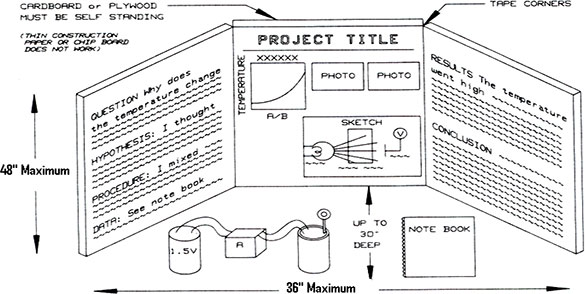2020 CALENDAR
Unfortunately, the 2020 Science Fair has been cancelled.
The Healdsburg Area Science Fair is a series of events that showcases both the practical and theoretical aspect of science. The kick-off event for the week is the "technology day" where we showcase the hands-on goodness of building something exciting. The day consists of many exhibits that are likely to change from year to year. In 2016 & 2017 the lineup included a Rube Goldberg Competition for grades 6-8, Air Rockets, Catapults, a Trebuchet, Slingshots, Coding School, and Robots. The second half of the week includes displaying traditional experimental projects and (starting this year!) STEAM projects. All local students from Kindergarten through 12th grade are encouraged to join in!
Online Registration - For faster registration, complete the online form in advance. If you cannot register online, no worries!, you may register on-site during project drop-off.
Bring your PROJECT to the Villa Chanticleer at 1248 N. Fitch Mountain Rd.
Registration Dates:
Sunday, March 15th, 2019 3:00 pm - 7:00 pm
Monday, March 16th, 2019 7:00 am - 9:00 am
You may work with no more than one partner. Group projects are judged in the grade category corresponding to the highest grade of the students (e.g., a 5th and 6th grade student work on a project together, the project is judged in the 6th grade group).
Experimental projects are placed and judged in one of the following:
Remember:
The projects should involve students doing actual research into a question to which they do not know the answer. Investigations that involve observations and data gathering but not experiments are also appropriate. While collections, demonstrations of known information, models, etc., are good things to do, they are not appropriate for our Science Fair. The old baking soda and vinegar volcano demonstration or an insect collection would, therefore, not be appropriate.
Following is a diagram of one way to present a project.

Maximum height:48"
Maximum width: 36"
Please include: Question, Hypothesis, Procedure, Data, Results, Conclusion and photos/illustrations.
Many people will view your project, and be interested in your work and handle parts of it. Adults are on duty while the Fair is open to the Public, but the Science Fair Committee cannot be responsible for loss or damage to your project or equipment.
A major goal of the Science Fair is to encourage use of the scientific method. Therefore your project must contain the following:
Judging criteria:
| 5 | Question and Hypothesis: Does the project ask or pose a clear question and/or hypothesis? |
| 15 | Experimental Procedures: Does the project show the steps followed, the materials used, and how data was collected? |
| 20 | Observation and Analysis: Does the project show what information was collected, and observations made? Were written records kept? How is the information used to answer the original question (purpose)? |
| 15 | Conclusion: Does the student clearly state what s/he learned? Is there discussion of why things may or may not have happened as expected? How might it be done differently next time? |
| 20 | Creativity, Originality & Skill Level: Does the work show originality of approach and handling? |
| 5 | Clarity: Will the average person understand what the project was about? |
| 20 | Display: Is care evident in the preparation, mounting, labeling, use of data, etc.? Does the Project attract the viewer? |
| 100 | Total |
The judges are local people involved in science and engineering. They work hard and study your projects thoroughly. Your project is anonymous until the preliminary judging is finished. Do not put your name or picture on the front of your project. First place winners will be asked to meet a team of judges on Wednesday between 3:30 p.m. and 5:00 p.m. to review their project for “BEST OF GROUP” and “BEST OF SHOW” Awards.
Everyone who does a Science Project is a Winner!
You will have accomplished something, seen it through and learned from your results. Everyone who enters receives a participation ribbon!
All award winners will be presented at the Awards ceremony, Thursday at 7pm at the Villa.
Your project must be picked up between 4 - 8 p.m. Thursday at the Villa.
Projects left after the awards ceremony will be DISCARDED.
To raise new questions, new possibilities, to regard old problems from a new angle, requires creative imagination and marks real advance in science.
Albert Einstein
2020 CALENDAR
Unfortunately, the 2020 Science Fair has been cancelled.